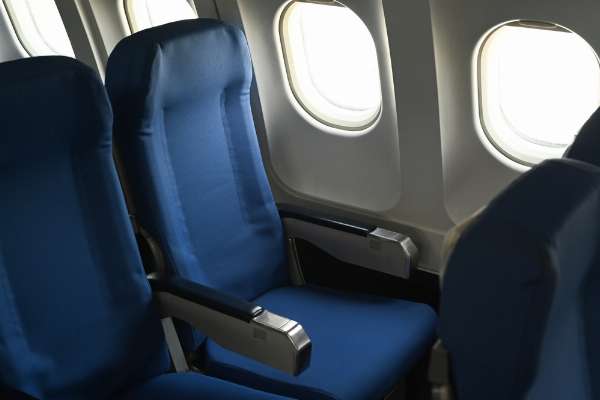Whether you’re on countless business trips or flying home for the weekend, using Wi-Fi during your flight is a great way to pass the time. Most airlines offer in-flight connections for entertainment while you’re soaring through the skies, but you may wonder where airlines get their internet. We’ve listed a few internet providers that help you stay connected while you’re en route to your destination.
Gogo
Gogo is an in-flight internet company that provides business and commercial services. It’s one of the most popular airline Wi-Fi providers, delivering in-flight Wi-Fi to major airlines including Air Canada, Alaska Airlines, Delta Airlines, and United. It even serves international airlines such as Vietnam Airlines and Virgin America. For ground-to-orbit internet, you can expect speeds of up to 60 Mbps.
You can purchase Wi-Fi on a per-flight basis, but frequent flyers can take advantage of monthly or annual plans for select airlines. These passes provide access to Wi-Fi onboard using any Wi-Fi-enabled device, as long as the flight has Wi-Fi coverage.
Inmarsat
Inmarsat is a leader in global mobile satellite communications. It offers its services in various markets, but its specialty is maritime satellite services — keeping you connected while in open waters. The company’s Global Xpress network features speeds of up to 50 Mbps per reception and up to 5 Mbps per transmission across several airlines, including British Airways, Qatar Airways, and Virgin Atlantic.
Intelsat
With over 50 satellites in its network, Intelsat connects passengers who fly commercially or privately. Its high-throughput satellite network allows you to transfer large files and receive video calls, features that aren’t normally part of traditional Wi-Fi services in aviation. Aviation companies such as Alaska Airlines use Intelsat Wi-Fi to bring data speeds up to 15 Mbps (download) and 2 Mbps (upload) using any data plan.
You can purchase Intelsat Wi-Fi before or during your flight, and pricing varies depending on the plane model.
Panasonic

With high-speed in-flight connections, Panasonic offers its services worldwide to clients such as Air France, Gulf Air, and Singapore Airlines. It also delivers Wi-Fi to airlines including Aer Lingus and All Nippon Airways through its subsidiary AeroMobile.
Panasonic’s Wi-Fi service stands out because of its low latency, thanks to its multi-orbit network. Having both low-Earth orbit and geostationary orbit networks means flights will have 100 percent internet coverage so you can stay connected throughout your trip. You can experience speeds of up to 32 Mbps when browsing, streaming, or gaming. Panasonic’s Wi-Fi is a paid service, but it offers airlines a subscription model with dedicated speeds and no preset data limits or overage fees.
T-Mobile
T-Mobile Broadband Internet delivers wireless connections, including Wi-Fi on planes. Delta Airlines, JAL, Alaska Airlines, American Airlines, and United allow T-Mobile customers to use Wi-Fi on select flights. Delta Airlines customers can use T-Mobile for texting and streaming when they sign up for its SkyMiles program, even if T-Mobile isn’t their mobile provider.
If you want to take full advantage of everything T-Mobile offers for flights, you can choose from one of its many Magenta plans. Prices for the in-flight feature depend on various factors, such as the number of phone lines and qualifying discounts.
Viasat
Viasat is a popular satellite internet provider in the U.S., and it offers broadband internet that provides in-flight Wi-Fi to airlines including JetBlue, Virgin America, and United. Its network of Ka-band satellites provides coverage across multiple regions around the world, with hopes to provide service across the planet with ViaSat-3, a dedicated global constellation.
Viasat’s internet is available on both commercial and business flights, and it offers forward-compatible equipment with its satellites. Airlines will save money down the line because they won’t need to manually upgrade the technology, delivering the best connectivity for their in-flight systems. You will, however, need to spend a bit on your Wi-Fi experience. American Airlines, for example, charges a small fee for Wi-Fi access on all its routes.


